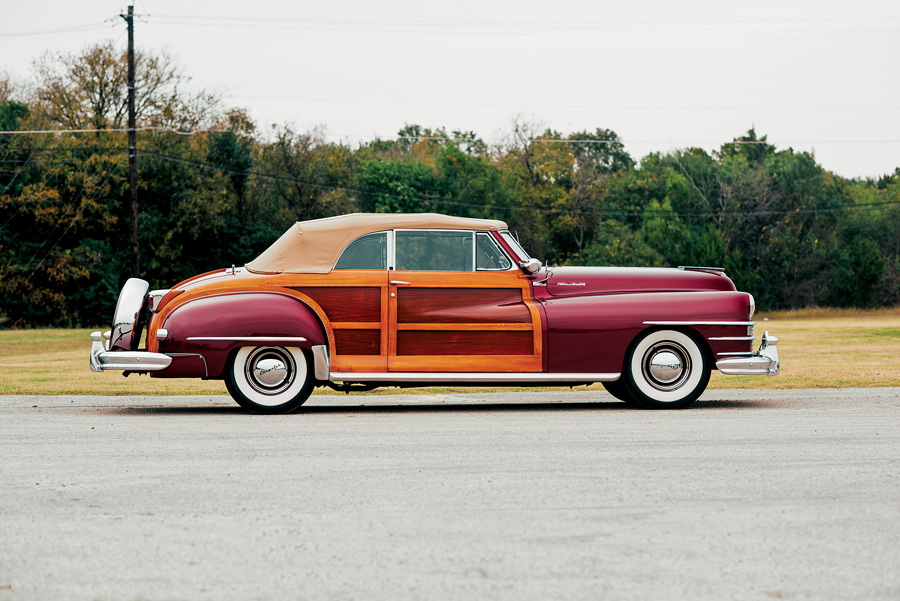Chassis Number: 7400026
Such was the demand for vehicles in the immediate aftermath of World War II that the 1946 Chryslers — like most other American makes — reappeared looking much the same as they had in 1942. One difference in the model line-up was that the wood-embellished Town & Country model, previously available only as a station wagon, was available either as a sedan or 2-door convertible on both the New Yorker (8-cylinder) and Windsor (6-cylinder) chassis.
With their contrasting ash framing and mahogany veneer and steel panels, these new Town & Country models were certainly very striking. They were also the best-equipped and most expensive models in the Chrysler range. Today they are among the most highly prized American automobiles of their era.
Being one of the very first Town & Country’s produced in 1946, the 25th car in the production line was then shipped to sunny and dry Southern California. This 8-cylinder Chrysler remained in one-family ownership for just under 70 years. Presented here with a California black plate and in great condition.

